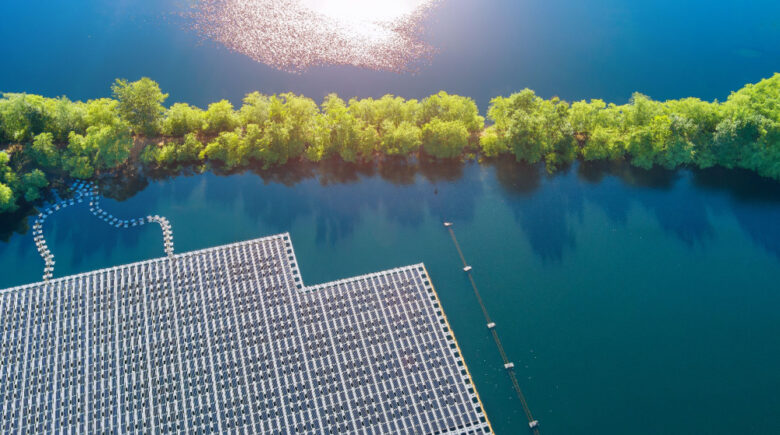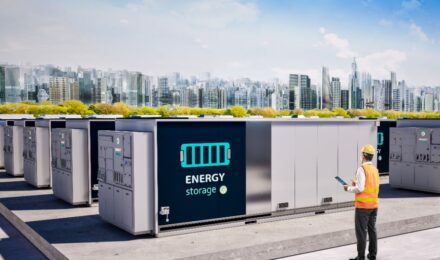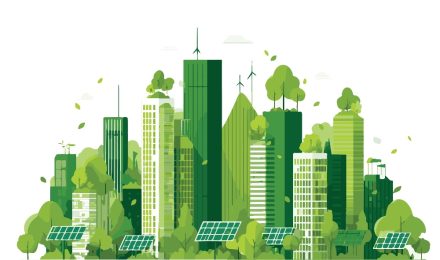According to the International Energy Agency (IEA), global solar power capacity has been doubling every three years. This upward trend is expected to continue, driven by rapid advancements in solar technologies and increasingly efficient photovoltaic materials.
One of the most promising innovations in this field is the development of floating solar farms—large-scale solar panel arrays installed on water surfaces. While rooftop and land-based solar installations are familiar sights, many developers are now turning their attention to lakes, reservoirs, and even coastal waters as prime locations for generating solar power.
Why Water?
Installing solar panels on water surfaces offers a range of compelling advantages—many of which go beyond energy production alone.
1. Reduced Land Costs
Traditional land-based solar farms require large plots of land, which must be purchased or leased—often at high cost. Floating solar eliminates this need, making it a cost-effective alternative.
This approach is especially valuable in places where land is limited or expensive, such as Japan, the Netherlands, Singapore, or U.S. states like Hawaii. In such areas, floating solar offers an innovative workaround to land scarcity and high real estate prices.
2. Improved Efficiency
Solar panels become less efficient when they overheat. However, when installed on water, the natural cooling effect of evaporation helps maintain lower operating temperatures. Studies show that water-cooled solar panels can be 10% to 15% more efficient than their land-based counterparts.
There’s an added bonus: by shading the water, these panels also reduce evaporation by up to 70%, helping to conserve water resources—making floating solar farms a dual-benefit solution.
3. Lower Carbon Footprint
Each kilowatt of electricity generated by solar energy replaces one that might otherwise come from fossil fuels like coal or oil. Even cleaner fossil fuels, such as natural gas, still produce carbon emissions. Floating solar farms represent another way to generate clean, carbon-free electricity.
To put it into perspective: a single 100-megawatt floating solar installation can prevent up to 1.5 million tons of CO₂ emissions over its lifetime.
Global Examples of Floating Solar Projects
Floating solar technology has already proven successful in several countries:
Singapore
In 2021, Singapore installed a massive floating solar farm on the Tengeh Reservoir, roughly the size of 45 football fields. This facility comprises 10 interconnected solar islands supporting 122,000 panels. At peak output, it generates 60 megawatts—enough to power 16,000 four-bedroom homes annually.
Japan
Japan has been a pioneer in floating solar. A major installation on the Yamakura Dam reservoir produces 13.7 megawatts, powering around 5,000 homes.
United States
One of the earliest and most successful floating solar systems was built in California’s Napa Valley. In 2008, the Far Niente Winery installed a 1.1-megawatt system on a one-acre pond. This solution allowed them to preserve their valuable vineyard land while generating clean power for irrigation and operations. After more than 15 years, the winery considers the project an “unqualified success.”
The Future Is Bright for Floating Solar
The outlook for floating solar is, quite literally, bright. Encouraged by the success of early projects, both private investors and governments are directing significant funding toward the expansion of this technology.
Current installations are typically located on calm, inland water bodies. But ambitious plans are underway for large-scale ocean-based systems capable of producing gigawatts of renewable energy. Experts see offshore floating solar as the “next frontier” in solar energy development.
Emerging Trends: Hybrid Systems and AI Optimization
Innovations are also occurring at the intersection of floating solar and other technologies:
- Hybrid Systems: Floating solar is being integrated with existing hydroelectric infrastructure to create hybrid power plants.
- AI Optimization: Artificial intelligence is being used to forecast energy production, optimize panel positioning, and streamline maintenance—maximizing efficiency while reducing costs.
Challenges Remain
Like all emerging technologies, floating solar faces challenges. Severe weather events, such as hurricanes, pose risks to offshore installations. Environmental concerns—such as potential effects on aquatic ecosystems, water temperature, and oxygen levels—are also being studied.
Still, these issues are not unique to floating solar. All forms of energy production come with trade-offs. What matters is managing those trade-offs responsibly.
A Clean Energy Solution for the Future
Floating solar farms are no longer a niche experiment—they are a growing part of the global clean energy mix. Their potential to deliver sustainable power while conserving land and water resources makes them a vital component in the fight against climate change.
As technology continues to improve and scale, floating solar promises to play a key role in creating a cleaner, greener future for our planet.
According to the International Energy Agency (IEA), global solar power capacity has been doubling every three years. This upward trend is expected to continue, driven by rapid advancements in solar technologies and increasingly efficient photovoltaic materials.
One of the most promising innovations in this field is the development of floating solar farms—large-scale solar panel arrays installed on water surfaces. While rooftop and land-based solar installations are familiar sights, many developers are now turning their attention to lakes, reservoirs, and even coastal waters as prime locations for generating solar power.
Why Water?
Installing solar panels on water surfaces offers a range of compelling advantages—many of which go beyond energy production alone.
1. Reduced Land Costs
Traditional land-based solar farms require large plots of land, which must be purchased or leased—often at high cost. Floating solar eliminates this need, making it a cost-effective alternative.
This approach is especially valuable in places where land is limited or expensive, such as Japan, the Netherlands, Singapore, or U.S. states like Hawaii. In such areas, floating solar offers an innovative workaround to land scarcity and high real estate prices.
2. Improved Efficiency
Solar panels become less efficient when they overheat. However, when installed on water, the natural cooling effect of evaporation helps maintain lower operating temperatures. Studies show that water-cooled solar panels can be 10% to 15% more efficient than their land-based counterparts.
There’s an added bonus: by shading the water, these panels also reduce evaporation by up to 70%, helping to conserve water resources—making floating solar farms a dual-benefit solution.
3. Lower Carbon Footprint
Each kilowatt of electricity generated by solar energy replaces one that might otherwise come from fossil fuels like coal or oil. Even cleaner fossil fuels, such as natural gas, still produce carbon emissions. Floating solar farms represent another way to generate clean, carbon-free electricity.
To put it into perspective: a single 100-megawatt floating solar installation can prevent up to 1.5 million tons of CO₂ emissions over its lifetime.
Global Examples of Floating Solar Projects
Floating solar technology has already proven successful in several countries:
Singapore
In 2021, Singapore installed a massive floating solar farm on the Tengeh Reservoir, roughly the size of 45 football fields. This facility comprises 10 interconnected solar islands supporting 122,000 panels. At peak output, it generates 60 megawatts—enough to power 16,000 four-bedroom homes annually.
Japan
Japan has been a pioneer in floating solar. A major installation on the Yamakura Dam reservoir produces 13.7 megawatts, powering around 5,000 homes.
United States
One of the earliest and most successful floating solar systems was built in California’s Napa Valley. In 2008, the Far Niente Winery installed a 1.1-megawatt system on a one-acre pond. This solution allowed them to preserve their valuable vineyard land while generating clean power for irrigation and operations. After more than 15 years, the winery considers the project an “unqualified success.”
The Future Is Bright for Floating Solar
The outlook for floating solar is, quite literally, bright. Encouraged by the success of early projects, both private investors and governments are directing significant funding toward the expansion of this technology.
Current installations are typically located on calm, inland water bodies. But ambitious plans are underway for large-scale ocean-based systems capable of producing gigawatts of renewable energy. Experts see offshore floating solar as the “next frontier” in solar energy development.
Emerging Trends: Hybrid Systems and AI Optimization
Innovations are also occurring at the intersection of floating solar and other technologies:
- Hybrid Systems: Floating solar is being integrated with existing hydroelectric infrastructure to create hybrid power plants.
- AI Optimization: Artificial intelligence is being used to forecast energy production, optimize panel positioning, and streamline maintenance—maximizing efficiency while reducing costs.
Challenges Remain
Like all emerging technologies, floating solar faces challenges. Severe weather events, such as hurricanes, pose risks to offshore installations. Environmental concerns—such as potential effects on aquatic ecosystems, water temperature, and oxygen levels—are also being studied.
Still, these issues are not unique to floating solar. All forms of energy production come with trade-offs. What matters is managing those trade-offs responsibly.
A Clean Energy Solution for the Future
Floating solar farms are no longer a niche experiment—they are a growing part of the global clean energy mix. Their potential to deliver sustainable power while conserving land and water resources makes them a vital component in the fight against climate change.
As technology continues to improve and scale, floating solar promises to play a key role in creating a cleaner, greener future for our planet.



